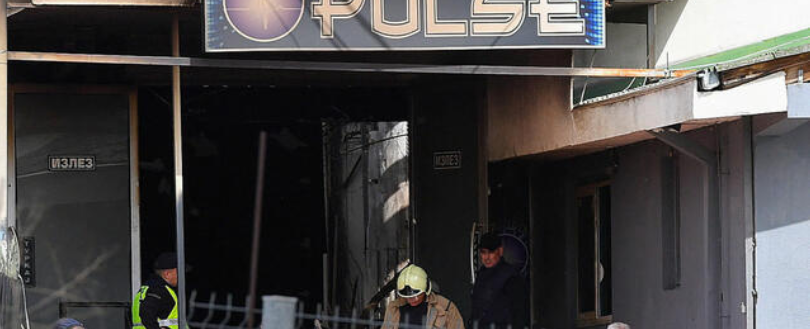
Fires in Nightclubs: A Deadly Global Trend
Like it? Share it!
23 April 2025
A devastating fire broke out at the Pulse nightclub in North Macedonia on 16th March 2025, killing 61 people. Early reports suggest the blaze was started by indoor fireworks, which ignited flammable materials inside the venue. Unfortunately, this incident is far from isolated. In the past quarter of a century, similar fires have occurred in countries including the Netherlands, Romania, Russia, Argentina, the USA, Ecuador, China, and Brazil, claiming the lives of around 1,000 people.
This tragedy, highlighted in a recent CROSS (Collaborative Reporting for Safer Structures) feature, brings a disturbing global pattern into sharp focus: the use of pyrotechnics in nightclubs continues to result in catastrophic loss of life. It raises an important question—could a similar event happen here in the UK?
Why Are Nightclubs Particularly Vulnerable?
Fire safety in nightclubs requires a higher level of vigilance due to a number of well-known risk factors:
- Crowds of people unfamiliar with the layout of the building
- Alcohol or other substances that may impair judgement
- Loud music and an often heightened emotional atmosphere
- Low lighting or disorienting special effects
- Secured or obstructed emergency exits
- Decorative materials, especially around events and holidays, that may be highly flammable
These elements combine to create a setting where fire can start quickly, spread rapidly, and lead to confusion during evacuation.
Managing the Risk: The UK Context
In the UK, venues such as nightclubs must comply with building regulations. However, many operate in repurposed spaces not originally designed for large gatherings. Escape routes may be narrow, poorly signposted, or infrequently used. Guidance such as that provided in the Fire Safety Risk Assessment: Small and Medium Places of Assembly is critical reading for those responsible for these premises.
Fire safety in England and Wales is overseen through the Regulatory Reform (Fire Safety) Order 2005 (FSO). The FSO shifted responsibility from licensing magistrates to employers, requiring them to carry out fire risk assessments and take action on any significant risks identified. Similar legislation applies in Scotland and Northern Ireland. This change also meant that the frequency and focus of inspections now vary based on Fire and Rescue Service (FRS) priorities, rather than being mandated as part of the licensing process.
How Fires Start—and Escalate
Most nightclub fires caused by pyrotechnics have two common contributing factors:
- The use of fireworks or stage effects indoors
- The presence of combustible materials, such as acoustic foam or decorative elements
Often, these fires are worsened by additional failures—overcrowding, locked or hidden exits, and untrained staff. In many cases, fireworks not intended for indoor use are illegally deployed inside venues, greatly increasing the risk.
It’s not difficult to imagine how a nightclub setting can quickly turn from festive to fatal. A room packed with people, impaired by alcohol, suddenly fills with smoke. Visibility drops. Panic sets in. In an unfamiliar environment, with no clear exits, even a small fire can have deadly consequences.
Preventing the Next Tragedy
To reduce the likelihood of similar incidents, action is needed on several fronts:
- Restrict pyrotechnics – Only approved, professionally operated indoor effects should be permitted.
- Enforce capacity limits – Overcrowding significantly raises the risk of harm in an emergency.
- Maintain escape routes – Emergency exits must be accessible, well-marked, and never obstructed.
- Raise public awareness – Young people, the primary patrons of these venues, should be taught to note exits and report overcrowding or blocked escape routes.
- Improve staff training – Door supervisors and venue staff should be trained in evacuation procedures and fire safety basics.
Accessibility and Inclusivity
Fire safety must account for all occupants, including those with physical impairments. People who require assistance to evacuate are at higher risk in emergencies. Evacuation plans must be inclusive and rehearsed. The hazards discussed are magnified for those unable to quickly move to safety without help.
A Culture Shift Is Needed
Perhaps one of the most important lessons from incidents like Grenfell is that the mindset of “it couldn’t happen here” is dangerously complacent. Vigilance must be constant. Whether you're a venue owner, a fire safety professional, or a clubgoer, awareness and preparedness can save lives.
Key Recommendations
- Only licensed professionals should manage pyrotechnics.
- All materials inside a club must meet fire resistance standards.
- Nightclubs should be included in local FRS risk-based inspection programmes.
- Information campaigns should encourage patrons to identify exits and remain alert.
- Staff training must include fire safety and evacuation protocols.
View the Source.
Our eNews provides regular insight into industry trends, news headlines, and product and service information. For more articles like this Subscribe to our enews.
Related news
-
Fire Officers Share Tips for Safer Caravan Holidays
17 April 2025
-
Government Extends Waking Watch Replacement Fund
15 April 2025
Related resources
-
Passenger Service Vehicle - Guidance Note
05 September 2023
